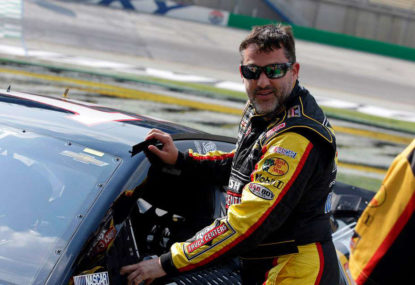'Welcome back': Reliving the last Chinese Grand Prix ahead of its much-anticipated return five years later
Five-years is a long time in motorsport, let alone the general state of the world – especially given the impact of the Covid-19 pandemic…

The death of young American sprint car driver Kevin Ward Jr has highlighted the need for continued vigilance in policing drivers wandering around on active race tracks.
Ward was fatally hit by three-times NASCAR champion Tony Stewart during a sprint car race in New York state, after the 20-year-old walked down the track to confront Stewart under yellow flag conditions following a collision.
Such confrontations have become the norm in American motorsport, where drivers in categories such as NASCAR drivers are encouraged to remonstrate and get physical in response to on-track incidents.
Stewart, for example, has been a proponent of this gloves off mentality, from throwing his helmet at rival Matt Kenseth’s car during a race, to shoving other drivers following collisions, public tirades and threats and more.
The Ward tragedy is the extension of that mindset and exposes the unnecessary risk of allowing drivers to have a free reign, without strict rules and regulations regarding evacuating the track.
Those who have called for the likes of V8 Supercars to adopt this NASCAR-style biff and barge, whereby on-track incidents go unpenalised and drivers abide by a self-policing payback system, need to be aware of how it can all get out of control very quickly.
V8 Supercars’ most famous road rage incident saw Mark Skaife go onto the Eastern Creek track to confront Russell Ingall in 2003. Both were heavily punished, Skaife for running onto the track and Ingall for swerving at Skaife.
The clash raised the ire of many inside the industry and the wider public, not a good look for two champions of the series. And while many now look back and laugh at the incident, the consequences of what can go wrong should not be ignored.
Motorsport needs to continue to be aware of the dangers of having people on track when cars are active, under normal running or safety car conditions.
As the safety levels of all motorsports continue to increase, complacency can slip into the mindset at a time when fatalities and injuries are thankfully decreasing.
Only recently we saw marshals forced to run onto the circuit to clear a stationary car at the German Formula OneGrand Prix, with no safety car intervention to lower the risk.
A no-risk approach needs to be taken to people on track; minimising the danger for marshals by neutralising or stopping the race and insisting that drivers forced out from their cars must immediately evacuate the track.
Often in motorsport it takes a tragic incident to highlight a safety deficiency. Hopefully the lesson from Ward’s death is that the race track is no place for a person approach a race car.